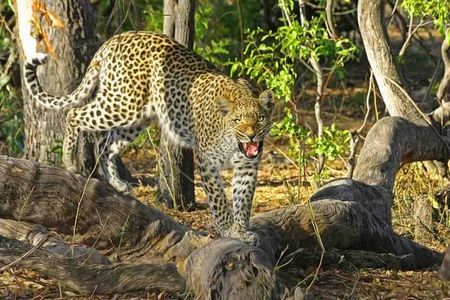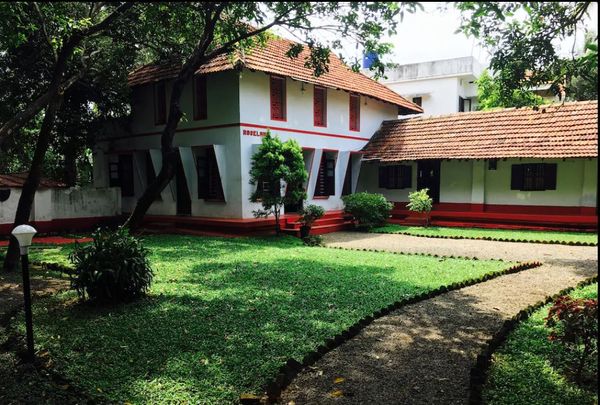The Wild Side of Jaipur: Amagarh Leopard Safari Experience
 Palakshi Meharwal
31 Jul, 2025
8 mins read
44
Palakshi Meharwal
31 Jul, 2025
8 mins read
44

Tucked away in the eastern stretches of Jaipur, beyond its palatial charm and bustling bazaars, lies an unexpected wilderness — the Amagarh Leopard Safari. While Rajasthan is widely known for its regal forts and camel safaris, few are aware of this lesser-known yet captivating wildlife experience that brings you face-to-face with one of India’s most elusive big cats — the Indian leopard.
Discovering Amagarh: A Hidden Wilderness in Jaipur
Amagarh Forest is nestled close to the Galta Hills, near the famous Monkey Temple (Galta Ji). The region has long remained under the radar, overshadowed by the glamour of Ranthambore and Sariska. However, over the past few years, efforts by Rajasthan's forest department and eco-tourism stakeholders have brought Amagarh into focus as a safe habitat for leopards and other wildlife, making it accessible to travelers eager to experience nature just a few kilometers from the Pink City.
This forested area covers roughly 15 square kilometers and is part of the Aravalli hill range — one of the oldest mountain systems in the world. Its rocky terrain, sparse vegetation, and ancient ruins provide the perfect camouflage for leopards, which are known for their solitary and stealthy behavior.
The Amagarh Leopard Safari Experience
Unlike large national parks where sightings may involve long drives, Amagarh’s compact ecosystem improves the odds of spotting leopards, especially during early morning or late evening safaris. The safari is conducted in designated gypsies, guided by trained naturalists and drivers. A typical safari lasts around two hours and offers a well-balanced mix of wildlife spotting, history, and panoramic views of Jaipur’s old cityscape.
Leopards in Amagarh have adapted remarkably well to their semi-urban surroundings. Sightings are not uncommon, though patience and silence are key. These cats are most active during dawn and dusk, scanning the terrain from rocky outcrops or moving swiftly through the dry scrub.
Other Wildlife and Flora
While the leopard is the prime attraction, Amagarh’s ecosystem is rich with other species as well. You may spot animals like nilgai (blue bulls), Indian foxes, desert hares, and an array of birdlife, including peafowl, partridges, and raptors such as crested serpent eagles and shikras. The region’s flora is mostly xerophytic, dominated by khejri trees, acacias, and native grasses that sustain the herbivore population.
Interestingly, the forest also has historical ruins dating back to the 18th century. The Amagarh Fort, built by Maharaja Sawai Jai Singh II, stands as a silent observer of the surrounding wilderness. These ruins offer a cultural dimension to the safari, merging heritage with ecology.
Conservation Efforts and Responsible Tourism
The development of Amagarh as a leopard safari zone is not merely a tourism initiative — it’s part of a broader conservation effort. Rajasthan’s forest department has taken several steps to ensure the safety of wildlife and minimize human-wildlife conflict. Clear boundaries, regulated safari operations, and community awareness programs are central to preserving the ecological balance.
Moreover, local communities are being involved in eco-tourism, creating employment opportunities while promoting conservation ethics. By offering sustainable wildlife experiences close to an urban center, Amagarh is setting an example of how urban biodiversity can be protected.
Best Time to Visit
The safari operates year-round, but the winter months between October and March offer the most pleasant weather for visitors. During summer, early morning and late evening safaris are preferable due to the scorching daytime heat. Monsoons add a touch of green to the otherwise arid landscape, although leopards tend to be less visible due to denser foliage.
Booking and Guidelines
Safari bookings can be made through the Rajasthan Forest Department’s official website or via authorized local operators. It is advisable to book in advance, especially during peak travel seasons. Each gypsy accommodates up to six people, and safaris are strictly timed to avoid overcrowding and ensure minimal disturbance to wildlife.
Here are a few tips for a responsible and rewarding safari:
- Maintain silence and avoid loud clothing or perfumes.
- Carry binoculars and a camera with a zoom lens for better viewing.
- Respect the guide’s instructions and do not attempt to step out of the vehicle.
- Avoid feeding animals or littering inside the forest area.
Why Choose Amagarh Over Other Safari Parks?
What sets Amagarh apart is its proximity to Jaipur. You can embark on a wildlife safari and be back in time to enjoy an evening at a rooftop cafe overlooking the Hawa Mahal. It’s ideal for travelers with limited time who want to experience nature without undertaking long journeys to distant reserves.
Furthermore, the Amagarh Safari is still relatively unexplored, which means smaller crowds and a more intimate wilderness experience. It’s an ideal choice for photographers, wildlife enthusiasts, and anyone looking to explore a different side of Jaipur.
Final Thoughts
The Amagarh Leopard Safari is a reminder that nature often thrives where we least expect it. Amid the historic charm of Jaipur lies a thriving wilderness, where leopards roam free against the backdrop of centuries-old forts and age-old Aravalli ridges. For those who seek more than just palaces and shopping in the Pink City, a visit to Amagarh offers a fresh, thrilling perspective.
Whether you’re an avid wildlife lover or a curious traveler, the Amagarh Leopard Safari promises an experience that’s as wild as it is enriching — a rare opportunity to witness the coexistence of history, urban life, and untamed nature.
Written By:
Palakshi Meharwal



Hotels at your convenience
Now choose your stay according to your preference. From finding a place for your dream destination or a mere weekend getaway to business accommodations or brief stay, we have got you covered. Explore hotels as per your mood.


